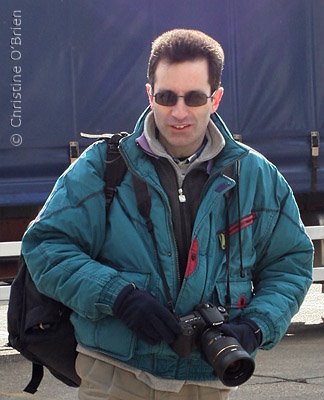IR Big Time - Infrared from medium format digital

A number of alternatives are available if you want to shoot infrared digital photography. Most, however, involve the use of compact cameras or DSLRs (cameras based on the old 35mm film format). Until recently there has (as far as I am aware) been no easy way to take infrared photos on anything larger than a 36mm x 24mm (full frame) sensor. Medium format digital backs were not available with IR capability, and because of their high price, most people were not interested in having them permanently converted for infrared use. For normal colour photography it is desirable to cut out as much infrared light as possible to get images that look as we expect to see them, but this makes most cameras unusable for infrared photography without modification.
There is one digital back with a feature that sets it apart from most others. The Mamiya ZD back (and the all-in-one ZD camera) has a user replaceable IR blocking filter over the sensor. At the end of last year, Mamiya announced that they were going to make available an infrared passing filter that could be used in place of the standard infrared cut (blocking) filter to enable IR photography.
The announcement went on to say that the filter would be available in mid January. Small camera manufacturers like Mamiya have a habit of announcing optimistic release dates, and so in keeping with that tradition, the first filter (yes, apparently they sent just one) landed here in the UK in late July.
I have been shooting with an IR modified EOS Rebel XT (350D) for a few years. This camera has given some very pleasing results and I have been very happy with it. When the Mamiya filter arrived I was keen to see how the images from the ZD back would compare with those from the Canon (apart from the obvious difference in size between an 8 million pixel image from an APS size sensor and a 22 million pixel image from the 36mm x 48mm sensor of the ZD back).

To make a comparison between shooting IR film and IR digital, I had been pleasantly surprised that the EOS was very sensitive to IR and I was able to use quite fast shutter speeds even with a filter that completely blocked out visible light (Lee 87). The other difference was that I had always shot with infrared mono (black & white) film, and the digital images showed subtle colour differences once the strong magenta cast had been neutralised.
Well, I am please to say that the Mamiya back, once freed from the constraints of its IR cut filter is even more sensitive to IR and appears sensitive to an even wider range of wave lengths. Some time ago I mentioned a technique for achieving strong false colour images from digital infrared files. The range of colour in the Mamiya IR images is so wide that this technique is no longer needed to achieve strong multi-coloured results. In fact some are so vibrant that I feel that they need to be toned down a little. For those who are interested, the images shown were converted from RAW using Bibble Pro (my previous favourite converter, DXO, will not convert Mamiya RAW files, so I have made the switch to Bibble Pro). More on that another time.
Images shot in or around Denham using a Mamiya 645 AFD II and Mamiya ZD back with a Lee 87 filter over the lens, processed with Bibble Pro.

0 Comments:
Post a Comment
<< Home